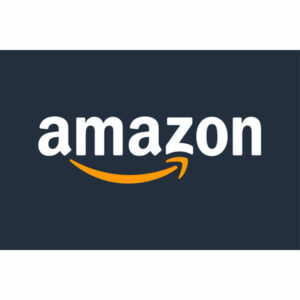
Amazon is far and away the largest e-commerce company in the United States with 40% market share (the next largest is Wal-Mart with 7% share).1 Possibly even more importantly, Amazon Web Services (AWS) is the largest cloud service provider in the world with 33% market share (the next largest is Microsoft with 19% share).2 Both of these businesses are dominant networks with high switching costs in industries that we believe can continue to grow much faster than GDP for many years to come.
In the case of e-commerce, Amazon benefits from physical network effects as a result of its unrivaled distribution network of warehouse, transportation, and other delivery infrastructure and from two-sided network effects as a result of its unrivaled marketplace connecting consumers with both third-party sellers (which now represent 56% of total product sales on Amazon)3 and advertisers (a small but rapidly growing part of Amazon’s e-commerce business). Additionally, Amazon benefits from high switching costs due to 1) Amazon Prime, which gives consumers access to unlimited and faster free shipping on millions of items as well as to services such as Prime Video and Prime Music, and 2) its device/media ecosystem where consumers build out content that is hard to transfer to other services, such as Kindle, Kindle Fire, Amazon Fire TV, Prime Video, and Audible. Furthermore, e-commerce still only accounts for 19.6% of U.S. retail sales4 (and similar percentages in Europe and the UK, where Amazon is also dominant),5 which we believe will enable Amazon’s ecommerce platform to grow at higher-than-GDP rates for many years to come. Finally, India, where Amazon and Flipkart are the two dominant e-commerce platforms with roughly 31 to 32 percent market share, 6 has incredibly exciting long-term growth prospects. With low GDP per capita ($1,900 versus the U.S. at $63,544),7 low e-commerce penetration (4.7% in 2019),8 fast growth (projected 27% compounded annual growth),9 and, fairly soon, the largest population in the world (1.4 billion and growing),/10 we believe Amazon India can rapidly and profitably grow for decades.
In the case of cloud services, which allow companies to outsource their key information technology needs such as computing, storage, networking, database, and analytics, Amazon’s AWS benefits from physical network effects as a result of its unrivaled global network of data centers including over 80 availability zones across 25 regions, over 100 direct connect locations, and over 200 edge locations.11 These network effects are so strong and the investment required to build the network is so massive that Google Cloud Services, the third biggest cloud services provider in the world with annualized revenues as of Q2 2021 of $18.4 billion, is still experiencing annualized operating losses of $2.4 billion!12 AWS also benefits from protocol network effects. Because of the complexity of cloud environments such as AWS, it can take years for a software engineer to become an expert in just one of them. When combined with the fact that the market for software engineers is both liquid (i.e. many software engineers change jobs frequently) and global, it’s no surprise that the global cloud services market has coalesced around only a few industry standards or “protocols.” Furthermore, AWS benefits from an app-store-like network that connects AWS customers with third party software providers who have created applications for use on AWS. As if three types of network effects weren’t enough, AWS also possesses extremely high switching costs since it is incredibly costly (both in time and money) and risky to migrate core IT infrastructure from one cloud service provider to another. Lastly, AWS operates in an industry with attractive long-term growth tailwinds. Cloud services accounted for only 9.1% of global enterprise IT spending in 2020,13 which we think will enable AWS to grow significantly faster than GDP for many years to come.
Back to Global Champions Summary Page
1 See https://www.emarketer.com/content/amazon-dominates-us-ecommerce-though-its-market-share-varies-by-category.
2 See https://holori.com/2021-cloud-market-size-and-aws-azure-gcp-market-share/.
3 See https://www.statista.com/statistics/259782/third-party-seller-share-of-amazon-platform/.
4 See https://www.digitalcommerce360.com/article/us-ecommerce-sales/.
5 See https://www.webretailer.com/b/online-marketplaces-europe/ and https://www.oliverwyman.com/content/dam/oliver-wyman/v2/publications/2021/apr/is-ecommerce-good-for-europe.pdf.
6 See https://www.modernretail.co/platforms/how-the-pandemic-strengthened-walmart-owned-flipkarts-marketshare/.
7 See https://data.worldbank.org/indicator/NY.GDP.PCAP.CD?locations=IN.
8 See https://www.ibef.org/industry/ecommerce-presentation.
9 See https://www.ibef.org/industry/ecommerce-presentation.
10 See https://www.business-standard.com/article/current-affairs/india-may-overtake-china-as-most-populous-country-even-before-2027-report-121051201219_1.html.
11 See https://aws.amazon.com/about-aws/global-infrastructure/?pg=WIAWS.
12 See https://holori.com/2021-cloud-market-size-and-aws-azure-gcp-market-share/.
13 See https://www.gartner.com/en/newsroom/press-releases/2020-11-17-gartner-forecasts-worldwide-public-cloud-end-user-spending-to-grow-18-percent-in-2021.

